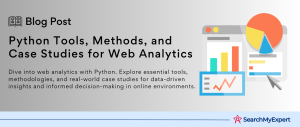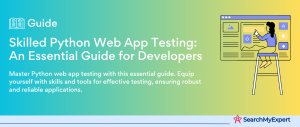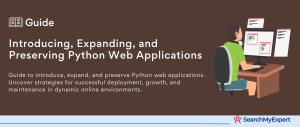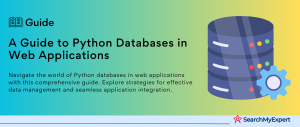Full-Stack Development: Embracing Python’s Power
Unveiling the World of Full-Stack Development
Full-Stack Development – a term that echoes ubiquitously in the tech realm. But what does it truly entail? Picture an artist, skilled in both painting and sculpture, seamlessly blending art forms. Similarly, full-stack development melds two domains: front-end (user interface) and back-end (server, database). It’s a holistic approach to web development, encompassing all stages from conception to fruition.
Benefits Unpacked
- Versatility:
Full-stack developers are the Swiss Army knives of the tech world, adept in various skills, enabling them to tackle diverse challenges. - Cost-Effectiveness:
One developer, multiple skills. It’s a budget-friendly model for businesses. - Streamlined Workflow:
Full-stack development means smoother transitions between project phases, thanks to a unified vision. - Rapid Development:
With a comprehensive skill set, full-stack developers can swiftly pivot between tasks, speeding up the development process. - Easier Project Management: Having a bird’s-eye view of the project, full-stack developers can oversee and manage the development process with greater efficiency.
Python: The Backbone of Full-Stack Web Development
Enter Python, a language synonymous with simplicity and versatility. Python has steadily ascended the ranks, becoming a go-to language for full-stack development. But why?
Python’s Role in Full-Stack
- Simplicity and Readability: Python’s syntax is straightforward, making it ideal for rapid development and easy learning.
- Rich Libraries and Frameworks:
Django, Flask, Pyramid – Python boasts a treasure trove of frameworks, simplifying the development of robust web applications. - Versatility: Python isn’t just a back-end hero. With frameworks like Django, it caters to both front-end and back-end, making it a full-stack powerhouse.
- Community Support:
Python’s vast community offers a wealth of resources, tools, and support, vital for full-stack development.
Advantages of Python for Full-Stack Projects
- Rapid Prototyping: Python’s simplicity enables quick turnarounds, ideal for prototyping.
- High Scalability:
Python-based web applications are known for their scalability, crucial for growing businesses. - Cross-Platform Compatibility: Python apps can run on various platforms, enhancing their reach and utility.
- Strong Ecosystem:
With a plethora of libraries and tools, Python equips developers to handle a wide range of full-stack development tasks efficiently.
Full-stack development represents a comprehensive approach to web development, and Python, with its simplicity, versatility, and powerful ecosystem, stands as a pillar in this domain. As we delve deeper, we’ll explore how Python, with its frameworks and libraries, revolutionizes full-stack development.
Mastering the Python Fundamentals: Laying the Foundation
Grasping the Python Syntax
Python, renowned for its simplicity, presents an inviting syntax that’s both intuitive and powerful. Here’s a snapshot:
- Readability:
Python emphasizes clear, readable code – think English, but for programming. - Indentation:
Python uses indentation, not braces, to define blocks of code. Neat and tidy! - Variables and Data Types: Easy-to-handle variables, no need to declare types. Python’s dynamic typing does the heavy lifting.
Python’s Data Types
- Integers and Floats: Numbers, plain and simple.
- Strings:
Text data, wrapped in quotes. - Booleans:
True or False, the binary choices of Python’s world. - Lists, Tuples, Sets, Dictionaries: Collections for organizing data, each with its unique twist.
Control Flow: Python’s Traffic Lights
- If, Else, Elif:
The decision-makers, guiding the flow of your code. - Loops (For, While):
The repeaters, do the heavy lifting multiple times.
Functions and Modules: Python’s Building Blocks
- Functions:
Define once, use repeatedly. They’re the reusable puzzle pieces of your code. - Modules: Think of them as Python’s library books, full of pre-written code to borrow.
Diving into Object-Oriented Programming (OOP)
- Classes and Objects: Blueprint and product. Define your class, and create multiple objects.
- Inheritance:
Pass on traits from one class to another. It’s all in the family! - Encapsulation and Polymorphism:
Hide the details, and show the essentials. One name, multiple forms.
Practicing with Data Structures
- Lists:
Your go-to sequence. Mutable, dynamic, and incredibly versatile. - Dictionaries:
Key-value pairs, the organized storage clerks of Python. - Sets: Unordered, unique elements, perfect for when duplicates are a no-go.
Python fundamentals form the bedrock of full-stack web development. With its clear syntax, powerful data structures, and OOP concepts, Python equips you to tackle complex development challenges with ease. Up next, we’ll dive into web frameworks and how Python makes web development a breeze.
Understanding Front-End Technologies: The Pillars of Web Interfaces
The Trinity of Web Development: HTML, CSS, JavaScript
Imagine constructing a house. HTML lays the foundation and frames the structure. CSS adds the paint and the decorations. JavaScript brings in the electricity, adding life and interactivity. That’s web development in a nutshell.
HTML: The Skeleton of the Web
- Purpose:
Structures the content of web pages. - Elements:
Tags like <head>, <body>, <p>, <div> – the building blocks of a webpage. - Attributes: Provide additional information about elements, like class, id, href.
CSS: The Stylist of the Web
- Role: Styles HTML elements – color, size, layout, and more.
- Selectors:
Targets HTML elements. Think of them as the ‘who’ in the styling conversation. - Properties and Values:
The ‘what’ and ‘how’ of styling. For instance, color: red;.
JavaScript: The Interactivity Maestro
- Function:
Brings web pages to life with dynamic content and interactivity. - Events:
Responds to user actions like clicks, hovers, and keypresses. - Manipulating the DOM:
JS can change, add, remove HTML elements, and styles on the fly.
Crafting Basic Web Interfaces
- HTML Layouts:
Start with a solid HTML structure. Headers, paragraphs, images, and links. - Styling with CSS: Apply CSS to make your website visually appealing. Align, color, and space elements.
- Adding Interactivity with JavaScript: Create dynamic elements – image sliders, pop-up messages, and form validations.
Creating User-Friendly Layouts
- Responsive Design:
Ensure your layouts look great on all devices. Use CSS media queries. - Navigation and Accessibility: Make your site easy to navigate and accessible to all users.
- Aesthetic Appeal: Use colors, fonts, and spacing effectively for a visually appealing site.
Understanding these front-end technologies is crucial for any full-stack developer. They form the visible part of your web application, the part users interact with. As we delve deeper into Python’s role in handling the back end, remember that these front-end skills are indispensable.
Dive into Python Web Frameworks: Crafting Modern Web Applications
Exploring Python’s Web Framework Gems: Django, Flask, Pyramid
Python’s toolkit boasts a range of web frameworks, each with unique features and uses. Let’s explore the frontrunners:
Django: The All-Inclusive Package
- Overview: Django is like a Swiss Army knife – a high-level framework that includes almost everything you need.
- Features:
ORM (Object-Relational Mapping), admin interface, and built-in security features. - Use Case: Ideal for complex, data-driven websites. Think e-commerce platforms and social networks.
Flask: The Minimalist’s Dream
- Overview:
Flask is a lightweight, micro-framework. It’s like a blank canvas – gives you the basics, and lets you paint the rest. - Features: Simple and easy to use, with the flexibility to add extensions as needed.
- Use Case:
Perfect for smaller projects or when you need custom solutions without the extra baggage.
Pyramid: The Middle Ground
- Overview:
Pyramid sits comfortably between Django and Flask. It’s like having a modular toolkit. - Features: Flexibility of Flask with some built-in features of Django.
- Use Case:
Suited for both small and large applications, especially when scaling is a factor.
MVC Architecture: The Backbone of Web Frameworks
- Model:
The data layer. It represents the database, handling data and logic. - View:
The presentation layer. It’s what the user sees and interacts with. - Controller:
The intermediator. It processes user inputs, interacts with the model, and renders views.
Building APIs and User Authentication
- APIs: These frameworks make API development smoother. Django Rest Framework and Flask-RESTful are game changers.
- User Authentication:
Essential for security. Django, for example, has a built-in authentication system, while Flask offers extensions like Flask-Login.
Python’s web frameworks are powerful tools in the full-stack developer’s arsenal. They simplify complex web development tasks, allowing you to focus on crafting remarkable web applications.
Working with Databases and SQL: Python’s Data Management Mastery
The Role of Relational Databases in Web Development
In the realm of web development, databases are akin to treasure chests, safeguarding precious data. Python, when coupled with relational databases like MySQL or PostgreSQL, becomes a formidable tool in data handling.
Basics of Relational Databases
- What Are They? Relational databases store data in tables, where each row is a record and each
column a field. - Popular Choices:
MySQL and PostgreSQL are widely used for their robustness and versatility.
SQL: The Language of Databases
Understanding SQL: SQL (Structured Query Language) is the standard language for interacting with databases.
Key Operations:
- Data Manipulation:
Inserting, updating, and deleting records. - Data Retrieval: Fetching data with queries, using commands like SELECT, JOIN, and WHERE.
Integrating Python with Databases
Connecting Python and Databases: Python’s database libraries (like psycopg2 for PostgreSQL) bridge the gap between your code and your database.
Managing Data:
- Creating Tables:
Define the structure of your data. - CRUD Operations:
Create, Read, Update, and Delete data seamlessly. - Handling Transactions: Ensuring data integrity and consistency.
Python’s integration with databases is a cornerstone of full-stack web development. It enables developers to manage large volumes of data efficiently, making it an essential skill for any aspiring full-stack developer.
Deployment and Production Essentials: Python’s Final Frontier
Navigating the Deployment Landscape
Deployment is the grand finale in the symphony of full-stack web development. Python applications can be deployed across various platforms, each offering unique advantages.
Deployment Platforms Explored
- Heroku: User-friendly, great for beginners, and offers seamless integration for Python applications.
- AWS (Amazon Web Services):
Robust, scalable, and feature-rich, ideal for larger applications. - Cloud Platforms (Google Cloud, Azure):
Provide flexibility, scalability, and a range of services tailored to different needs.
Setting Up for Success
- Configuring Web Servers:
Critical for handling requests and serving your application to users. - Production-Ready Application: This involves optimizing performance, ensuring database connectivity, and setting up environment variables.
Best Practices for a Smooth Sailing
- Version Control:
Use tools like Git for tracking changes and collaborating with teams. - Error Handling: Implement robust error-handling mechanisms to catch and resolve issues promptly.
- Security Measures:
Prioritize security. Implement HTTPS, use secure authentication methods, and regularly update dependencies.
Deploying a Python application requires careful planning and attention to detail. By choosing the right platform and adhering to best practices, you can ensure a smooth and successful launch of your application.
Advanced Skills and Continued Learning: Elevating Your Python Expertise
Broadening the Python Horizon
Continued learning is crucial in the ever-evolving landscape of web development. Python, with its vast array of libraries and frameworks, offers endless opportunities for growth and specialization.
Exploring Additional Libraries
- For Specific Features: Dive into libraries like Pandas for data analysis, Matplotlib for data visualization, or TensorFlow for machine learning.
- For Enhanced Functionality: Explore advanced frameworks like Tornado for handling long-lived network connections or Scrapy for web scraping.
Quality Assurance with Testing Tools
- Ensuring Code Quality: Utilize Python testing frameworks like PyTest or Unittest to write and run tests, ensuring your code is bug-free and reliable.
- Integration with CI/CD:
Incorporate testing into Continuous Integration/Continuous Deployment pipelines for automated quality checks.
Keeping Pace with Python and Web Development Trends
- Stay Updated: Follow Python’s latest developments, new library releases, and updates in web technology.
- Community Engagement:
Participate in forums, attend webinars, or contribute to open-source projects to stay connected with the community and learn from peers.
Conclusion
Advanced skills and continuous learning in Python full-stack development are about expanding your toolkit and staying relevant in a rapidly changing field. By exploring new libraries, mastering testing tools, and keeping up with trends, you’re not just coding; you’re crafting the future of the web.
Unleash your software’s potential with Python Development Service.
Table of Contents
Toggle






